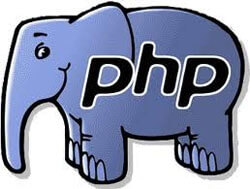Implementing an Array.count() Method in JavaScript
As much as I write about MooTools on my blog, I spend most of my work day knee-deep in PHP. As you probably know, one way to get the size of an array in PHP is to use the count() function:
echo count($my_array);
In JavaScript, the way to get the size of an array is to use the length property, like this:
alert(my_array.length);
For some reason, I absolutely hate the ".length" way of retrieving the length of an array. For this reason, I've implement the count() method into JavaScript:
Array.prototype.count = function() {
return this.length;
};
The count() habit is difficult to break, so why try?
![CSS vs. JS Animation: Which is Faster?]()
How is it possible that JavaScript-based animation has secretly always been as fast — or faster — than CSS transitions? And, how is it possible that Adobe and Google consistently release media-rich mobile sites that rival the performance of native apps?
This article serves as a point-by-point...
![Responsive and Infinitely Scalable JS Animations]()
Back in late 2012 it was not easy to find open source projects using requestAnimationFrame() - this is the hook that allows Javascript code to synchronize with a web browser's native paint loop. Animations using this method can run at 60 fps and deliver fantastic...
![CSS Custom Cursors]()
Remember the Web 1.0 days where you had to customize your site in every way possible? You abused the scrollbars in Internet Explorer, of course, but the most popular external service I can remember was CometCursor. CometCursor let you create and use loads of custom cursors for...
![PHP Woot Checker – Tech, Wine, and Shirt Woot]()
If you haven't heard of Woot.com, you've been living under a rock. For those who have been under the proverbial rock, here's the plot:
Every day, Woot sells one product.
Once the item is sold out, no more items are available for purchase.
You don't know how many...





Thanks for your blog. you offer great advice and tutorials and for some odd reason, if I am looking to see how to complete a task, you have a tutorial on it or at least an idea on the concept I am trying to achieve; so thanks David. Although this post came about 2 days too late. :)
Do you do this for strings as well?
@Binny: No, I don’t. Just arrays.
This is all fine and well, but length is fundamentally different from count.
Take the following example:
var myArray = [‘one’, ‘two’, ‘three’];
// myArray.length == 3, as we would expect
var myOtherArray[100] = ‘one’;
//myArray.length == 100, NOT 1
Even though we only have 1 item in the array, ‘length’ refers to the largest index + 1. Unlike PHP where we can use numeric keys and strings for indexes in an ad hoc way and still get an accurate count via count(), in JS it’s not quite the same.
In a way, this is just splitting hairs, but a lot of people already don’t understand JS’s length property, and referring to it as “count” only serves to further the confusion.
Correction to my previous post:
the second code snippet would be:
var myOtherArray = [];
myOtherArray[100] = ‘one’;
and its length property would actually return 101.
That’s right and that’s what I was expecting when searching for count on js. This should do it:
function count(array) { var c = 0; for(i in array) // in returns key, not object if(array[i] != undefined) c++; return c; }Riv, thats a much better form of the count use. Its surprising that this is not built into javascript.
Array.prototype.count = function () { for (k in this) { if (this[k].constructor !== Function) { this.length++; } }; return this.length; }I think it’s okay for personal project but it has a counter side when you are in enterprise. The maintainability is harder when people use custom extension (prototype existing framework object). It cane be confusing. In some case, I have seen people creating function to simply get an object inside an array. I think this should be used with parsimony. But, it’s just my opinion…
Array.prototype.count = function () { var counter = 0; // Initializing main counter for(i in this) // Looping through elements if(typeof this[i] != "undefined") // If empty it's undefined counter++; // Counting not empty elements return counter-1; // Excepting own function }This is a working one. It counts function elements too.
I’ve just bumped into learning Js, I try to be as attentive as possible but, I don’t find a way. So, may any one help me how to understand Js programming.
Array.prototype.count = function (a) { var c = 0; for(var i = 0; i < this.length; i++) { if(typeof(this[i]) !== "undefined") { if(typeof(this[i]) == "string" && this[i].length == 0) { } else { c++; } } } return c; }OR
count = function (a) { var c = 0; for(var i = 0; i < this.length; i++) { if(typeof(a[i]) !== "undefined") { if(typeof(a[i]) == "string" && a[i].length == 0) { } else { c++; } } } return c; }Wow, no functionality to edit comments? What is this, the year 2001?
Querying the length is faster than invoking a method, but the habit of using
.count()is interesting.In python is used
len([1, 2, 3])function to get the count, so the JavaScript’s length is not so bad :).